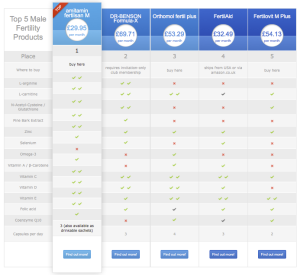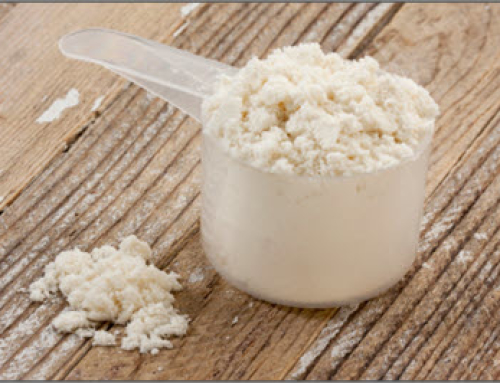Protecting Male Fertility with L-glutathione
[tube]rTnViNgJEzU#t=32[/tube]
A powerful antioxidant, l-glutathione is found in every cell within the human body. It’s particularly highly concentrated around the liver to assist with body detoxification. L-glutathione is made up of three compounds: l-cystine, l-glycine, and glutamic acid. This antioxidant helps to protect cells from oxidative stress and is particularly important for fertility.
Why oxidative stress is damaging to sperm
 A rich coating of polyunsaturated fatty acids make up a large portion of the layer that coats mammalian spermatozoa. These fatty acids are highly vulnerable to damaged caused by reactive oxygen species due to lipid peroxidation. This causes irreversible damage to the sperm cell membrane. As a result, sperm lose motility, their morphology is altered, and the ability to penetrate the egg is dramatically reduced, significantly lowering fertility1, 2.
A rich coating of polyunsaturated fatty acids make up a large portion of the layer that coats mammalian spermatozoa. These fatty acids are highly vulnerable to damaged caused by reactive oxygen species due to lipid peroxidation. This causes irreversible damage to the sperm cell membrane. As a result, sperm lose motility, their morphology is altered, and the ability to penetrate the egg is dramatically reduced, significantly lowering fertility1, 2.
L-glutathione and healthy sperm
 To protect sperm from lipid peroxidation the body depends on important antioxidant enzymes, specifically glutathione peroxidase/reductase (GPX/GRD), superoxide dismutase (SOD), and catalase. If l-glutathione levels are low during sperm production it can cause problems with spermatozoa membrane integrity due to lack of protection from oxidative stress3.
To protect sperm from lipid peroxidation the body depends on important antioxidant enzymes, specifically glutathione peroxidase/reductase (GPX/GRD), superoxide dismutase (SOD), and catalase. If l-glutathione levels are low during sperm production it can cause problems with spermatozoa membrane integrity due to lack of protection from oxidative stress3.
Andrologists have confirmed in clinical trials that infertile men have increased levels of oxidative stress which is likely to account for poor sperm quality4, 5. The infertile men in these studies have significantly higher reactive oxygen species compared with the control groups. Low antioxidant concentrations correlated with a reduction in sperm motility. Higher levels of reactive oxygen species were associated with defective sperm morphology and low sperm counts.
The results from studies by Pasqualotto and colleagues support the theory that free radical damage can reduce sperm’s lifespan, decrease motility, and reduce the likelihood of penetrating the oocyst. According to these studies, 40% of men diagnosed with idiopathic infertility have higher concentrations of reactive oxygen species in their bodies. Researchers therefore recommend that infertile men utilise strategies to lower oxidative stress and subsequently increase sperm quality.
Restoring fertility with l-glutathione
Although l-glutathione is important for strong antioxidant defences, this amino acid also has another vital role to play in male fertility. Together with the trace element selenium, l-glutathione forms phospholipid hydroperoxide glutathione peroxidase. This is a enzyme found within spermatids. It becomes an important mid-piece structural protein once the spermatozoa have matured. If the body is deficient in either l-glutathione or selenium, poor sperm motility can result due to instability within the mid-piece6, 7.
Studies have shown that l-glutathione supplementation can be used to restore the important polyunsaturated fatty acid coating of sperm cells to protect integrity8, 9. Consequently, healthy sperm motility and morphology can be supported through l-glutathione therapy10.
L-glutathione sources
 L-glutathionecan be sourced in different ways depending on the objective. It is made up of three different amino acids, foods rich in these three compounds can help to elevate l-glutathione concentrations. L-cysteine is the rarest of these three compounds and can be sourced by onion, unprocessed meats, garlic and eggs. Raw vegetable and fruit can also provide the nutrients needed to produce l-glutathione.
L-glutathionecan be sourced in different ways depending on the objective. It is made up of three different amino acids, foods rich in these three compounds can help to elevate l-glutathione concentrations. L-cysteine is the rarest of these three compounds and can be sourced by onion, unprocessed meats, garlic and eggs. Raw vegetable and fruit can also provide the nutrients needed to produce l-glutathione.
A quality N-acetyl-cysteine supplement can also help to elevate l-glutathione levels to better support sperm parameters and overall reproductive health.
Finally, a good male fertility combination supplement will either include either L-glutathione or it’s precursor in the body NAC.
The process of sperm generation is a complex one and very sensitive to environmental and nutritional deficiencies. With a dedicated course of male fertility nutrients over at least three months (sperm’s time to maturity / ejaculation), men are able to effectively improve their key fertility success parameters sperm count, shapes (morphology) and movement (motility).
Referenced sources:
- “Storey, B. (1997). Biochemistry of the induction and prevention of lipoperoxidative damage in human spermatozoa. Molecular Human Reproduction. Volume 3, Issue 3, (pp. 203-13)”. ↩
- “Sikka, S. (1996). Oxidative stress and role of antioxidants in normal and abnormal sperm function. Frontiers in Bioscience.” ↩
- “Bhardwaj, A. et.al. (2000). Status of vitamin E and reduced glutathione in semen of oligozoospermic and azoospermic patients. Asian Journal of Andrology. Volume 2, pp. 225-228.” ↩
- “Pasqualotto, F. et.al. (2000). Relationship between oxidative stress, semen characteristics, and clinical diagnosis in men undergoing infertility investigation. Fertility and Sterility. Volume 77, (pp. 459-64.).” ↩
- “Pasqualotto, F. et.al. (2000). Oxidative stress in normospermic men undergoing infertility evaluation. Journal of Andrology. Volume 22, Issue 2, (pp. 316-22.).” ↩
- “Ursini, F. et.al. (1999). Dual function of the selenoprotein PHGPx during sperm maturation. Science, Volume 285, (pp. 1393-93).” ↩
- “Hansen, J. and Deguchi, Y. (1996). Selenium and fertility in animals and man: a review. Acta Vet Scand. Volume 37, (pp.19-30).” ↩
- “Lenzi, A. et.al. (2000). Lipoperoxidation damage of spermatozoa polyunsaturated fatty acids (PUFA): scavenger mechanisms and possible scavenger therapies. Front Bioscience. Volume 5.” ↩
- “Lenzi, A. et.al. (2002). Polyunsaturated fatty acids of germ cell membranes, glutathione and blutathione-dependent enzyme-PHGPx: from basic to clinic. Conception. Volume 65, Issue 4, (pp. 301-1-4).” ↩
- “Lenzi, A. et.al. (1992). Glutathione therapy for male infertility. Arch Andrology. Volume 29, Issue 1, (pp. 65-8).” ↩







